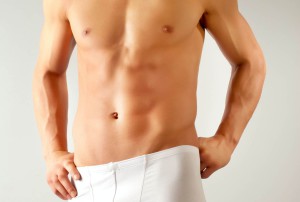Gynecomastia scar with Shamá Method®
 Since 1985, Shamá Clinic has treated many people with gynecomastia scars that have had great results with our unique treatment method, the Shamá method®.
Since 1985, Shamá Clinic has treated many people with gynecomastia scars that have had great results with our unique treatment method, the Shamá method®.
1000´s documented treatments implemented, why we can confidently say that our method removes alternatively corrects scars by 50-90%.
Nobel Forum, Karolinska Institute & International Confederation for Plastic, Reconstructive and Aesthetic Surgery (IPRAS) has recognized Shamá method® for its good result. Learn more about our references here!
Patients referred from Swedish county hospitals and foreign medical facilities are continuously sent to Shamá Clinic for treatment.
What is gynecomastia?
Gynecomastia involves significant breast growth in men. This also occurs occasionally in newborns. Many male teens develop gynecomastia during puberty, which creates a psychological stress, though the excessive breast growth usually turn to normalcy within a few years without any further treatment. Gynecomastia can also occur because of illness or hormonal imbalance, side effects to medication or increased estrogen values. Various surgical measures can be performed depending on what is corrected and removed. Breast tissue is usually removed with liposuction, the breast gland and excess skin is surgically removed.
Where are gynecomastia scars located and how do they look?
Depending on the surgical technique performed, the scars can sit on different places on the chest. When it is required to reduce excess skin and breast tissue, the scars can usually be asymmetric and visible. The scars can encircle the areola and occur below or to the side of the chest. Rough uneven skin and scarring occurs, such as atrophy, hypertrophy, hypo- and hyperpigmentation after gynecomastia surgery.
How we treat gynecomastia scars with Shamá method®
The appearance of the scars depends inter alia on the surgeon’s skill and your anatomical healing. For a natural looking areola, it is required that the entire areola receives a smooth and fine texture. Scars outside the areola requires care and one should keep in mind that the breast tissue is very porous. If you have keloid or hypertrophic scars it is important to treat several times to avoid getting atrophy, that is sunken scar tissue. Since breast tissue is not directly linked to the muscle it does not receive the same structure and support as in other areas of the body. To make the areola appear natural one need to treat both within the areola and around it where the scars are. The scars are usually very rough and requires several treatment sessions to achieve a natural and smooth result. In some cases, one needs to enlarge the areola to create a symmetry and the same proportion in both areola.
The first visit is very important because we thoroughly examine your scars and anatomical conditions. You can read about the first visit (consultation) here! You can also read further here about our treatment method: Shamá method®
 Phase 1 The first phase of scar treatment is to examine and determine the scar injury in question. The surface of the scar tissue is prepared and penetrated with medical products and antioxidants. These gentle products soften and smooth out the uneven scar tissue. A sterile disposable needle goes very gently into the skin, barely a millimeter deep and is thus not painful. The products used sinks superficially through the skin and acts on the scar days after the treatment. It is important to take care of the treated area according to the instructions given. The care after the scar treatment is an important step to get good result. Radio frequency therapy helps stimulate collagen in the skin which complements Shamá method®.
Phase 1 The first phase of scar treatment is to examine and determine the scar injury in question. The surface of the scar tissue is prepared and penetrated with medical products and antioxidants. These gentle products soften and smooth out the uneven scar tissue. A sterile disposable needle goes very gently into the skin, barely a millimeter deep and is thus not painful. The products used sinks superficially through the skin and acts on the scar days after the treatment. It is important to take care of the treated area according to the instructions given. The care after the scar treatment is an important step to get good result. Radio frequency therapy helps stimulate collagen in the skin which complements Shamá method®.
Phase 2 Second phase involves a smoothing of the injured skin surface as well as improvement of melanin (pigment) damage. Several different pigments are mixed together to remove hyper- or hypopigmentation. The first treatments smooth out the surface texture of the scar and thus form a foundation that will be a good base.
Phase 3 In the third phase of scar treatment it’s about treating to the degree where the scar´s structure achieves a harmony in color and form with the unharmed skin, thus reducing the scar until it´s no longer visible.
How many scar treatments needs to be done & the time between them?
It is necessary with at least 4 treatments for a satisfactory result. The scar is treated very carefully and the scar treatment is repeated at 8 to 30-day intervals depending on the characteristics of the scar. This is to avoid more stress on an already damaged skin. Every scar, even on the same person can have different properties. For an assessment, a personal visit is required where the scar is examined. Even then a complete assessment may not be possible. After the first scar treatment, one will come to know the scar and your skin properties completely, or at least well enough for a successful treatment process. Scar treatment is a gentle method and therefore repeated several times for a great and safe result. The average number of treatments is about 4-6.
What can one expect after a successful gynecomastia scar treatment?
We have performed 1000s of documented scar treatments on different skin types, and can with confidence say that our method removes scars, alternatively corrects by 50-90%. Every case is of course on an individual basis and only after a consultation can a proper assessment be given. A scar is injured skin tissue and sometimes an overall visible repair isn’t possible. However, it can be much better than before. Many clients and patients have been satisfied with a visible improvement.
Can I return to everyday life as usual after a scar treatment?
Yes, it’s perfectly possible to return to everyday life as usual. The treated scar should not be covered with bandage. The first few days you should be careful with heavy exercise where you sweat a lot.
 Does it hurt when you treat gynecomastia scars?
Does it hurt when you treat gynecomastia scars?
Some experience a tingling sensation, but this is not a painful procedure. Usually, only a topical anesthetic is needed which is applied for about 30-60 minutes. If you are very sensitive, stronger anesthetics is used if necessary.
Does side effects or injuries occur after a scar treatment?
After 30 years of well documented work, the Shamá method® has not shown any side effects, complications or hazards. The scars are treated in several sessions to create the best outcome which ensures that there are no complications or abrasions on the already damaged scar tissue. Many people believe that because the scar is thick and hard, the upper layer of the skin (epidermis) is also more durable. On the contrary, the scarred skin is more fragile than the normal skin and therefore it has to be treated in several stages with care and diligence.
What happens when I expose the treated area to sunlight?
It’s fine to expose oneself to sunlight two days after scar treatment. However, excessive sunbathing is not recommended.

